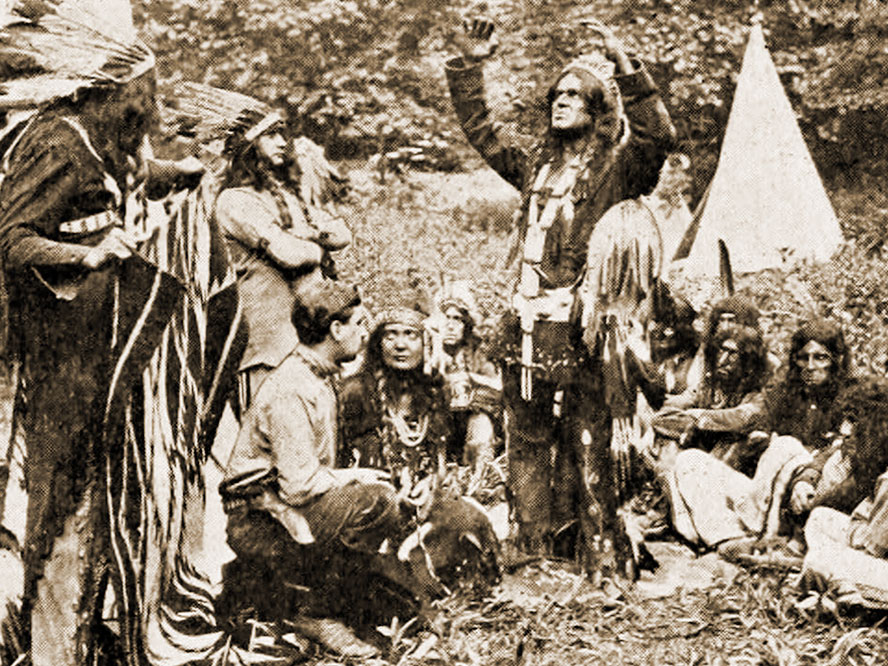| |
 |
| |
Photograph: Silent Era image collection.
|
Apache Gold
(1910) United States of America
B&W : One reel / 950 feet
Directed by (unknown)
Cast: (unknown)
Lubin Manufacturing Company production; distributed by Lubin Manufacturing Company. / Produced by Siegmund Lubin. Scenario by Emmett Campbell Hall. / Released 27 June 1910. / Standard 35mm spherical 1.33:1 format.
Drama: Western.
Synopsis: [?] [From The Moving Picture World]? John Mills, a young prospector, takes advantage of an accident to Spring Blossom, the daughter of an Apache chief, by winning her affections and getting himself adopted as a member of the tribe when he marries her. His interest in the chief’s daughter is on account of the apparently inexhaustible store of gold the Apaches possess, and when, as a member of the tribe, he is shown the location of the placer mine, he loads himself down with the precious metal and returns to his own people, forgetful of the little Indian girl who mourns his going. Some years later, with his money gone, Mills secretly returns to the mine to replenish his store and is overseen by a member of the tribe. He is captured, and with true Apache cruelty he is tied to a tree with water and food within reach of his one free hand. But to take food or water will result in the discharge of a gun, giving him his choice of quick or lingering death, though the Indians know that he will suffer as long as possible in the hope of rescue. A little Indian boy sprains his ankle so badly that he cannot move and, in response to his piteous pleas, Mills reaches for the water, knowing that his action will cause the discharge of the gun and enable the boy to approach the water with safety. At that moment, Spring Blossom appears and releases her husband, telling him that the sacrifice that he was about to make was for the sake of their child. The now repentant Mills takes them away with him and they settle upon a farm bought with Apache gold far from the Apache camp.
Reviews: [The Moving Picture World, 9 July 1910, page 15] An Indian story that possesses interest because it shows how Apaches torture prisoners at times. It is a choice of a quick or lingering death, and naturally the victim holds out as long as possible, always hoping for rescue. But the ending is good, and the little family, reunited, go away to live by themselves, with the inference that happiness is theirs.
Survival status: (unknown)
Current rights holder: Public domain [USA].
Listing updated: 25 April 2025.
References: Website-AFI; Website-IMDb.
|




































